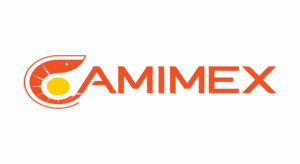Last week, affected by multiple factors, the Shanghai zinc prices fluctuated slightly. As of the close on March 8th, the main contract for Shanghai zinc 2404 settled at 21,195 yuan/ton, with a weekly decrease of 0.56%. Regarding the future price of Shanghai zinc, market participants believe that it will continue to oscillate in the short term, with a high probability of an upward trend in the long term.
Zinc Prices Fluctuate Slightly Under Multiple Factors
Referring to the initial momentum for the rise in Shanghai zinc prices last week, Mo Xiaoxiong, a senior researcher at Guotai Junan Futures Research Institute, believes it mainly stems from supply-side contradictions.
Mo Xiaoxiong introduced that Lundin’s Neves Corvo entered a phase of production reduction due to an accident, and Vedanta’s Gamsberg needed to increase waste stripping, leading to a gradual decline in grade, further exacerbating the global tightness of zinc concentrate, with processing fees continuously declining. At the same time, smelters’ profits are squeezed, some refineries face losses, the logic of smelting profit-loss transmission to capacity utilization rate shrinkage may gradually materialize, stabilizing and rising prices. In addition, the reduction in production by Korea’s Young Poong Corp. at its Seokpo smelting plant also provided some upward catalyst for Shanghai zinc.
Furthermore, Xia Yingying, an analyst at Nanhua Futures Nonferrous, believes that positive developments at the macro level, both domestically and abroad, also provided some support for the upward trend of Shanghai zinc prices. Especially the warming expectations of interest rate cuts caused by statements from foreign central banks, which actually helped the overall prices of non-ferrous metals to rise.
Cai Li from the Hongye Futures Financial Research Institute agreed with this view. According to Cai Li, last week, both the European Central Bank and the U.S. Federal Reserve responded to the market’s keen interest in interest rate cuts. Under the stimulus of interest rate cut expectations, the U.S. dollar fell sharply this week, and non-ferrous metals surged significantly.
However, Cai Li added, with the National People’s Congress session underway and the 2024 government work report setting the annual economic growth target at 5%, planning the deficit rate at 3%, arranging local government special bonds at 3.9 trillion yuan, planning to issue super-long-term special bonds for several consecutive years, with 1 trillion yuan to be issued this year. The market has strong confidence in China’s future policy efforts, especially the mentioned 1 trillion special bonds and old equipment replacement, which may significantly stimulate demand for non-ferrous metals.
Consumption Growth Is Moderate; Supply and Demand Contradiction Is Not Acute
Xia Yingying told Futures Daily reporters that the current market shows a loose ingot and tight ore pattern, with zinc concentrate TC facing continuous downward pressure.
Especially with Korea’s Seokpo smelting plant recently announcing a 20% production cut, Cai Li believes that since this smelting plant is one of the important zinc production bases globally, its production cut undoubtedly exacerbates market concerns about zinc supply tightness. However, in terms of inventory, given that the registered warehouse stocks of zinc in the Shanghai Futures Exchange and LME have been hovering near the highest levels since May 2021, it proves that market supply is relatively abundant, while demand has not kept up.
Specifically, in domestic and foreign markets, according to Mo Xiaoxiong, domestic consumption has warmed up seasonally, but there are differences among sectors: sectors like electric power towers and auto parts have quickly recovered after the Spring Festival, whereas orders for building materials and photovoltaics are still relatively weak. At the overseas level, manufacturing in the U.S. and emerging markets has strengthened moderately, with Europe also showing signs of a low-level recovery, especially significant growth in demand in the automotive sector.
Overall, Mo Xiaoxiong believes that the global zinc fundamentals are currently at a stage of marginal supply reduction and demand recovery. “It’s just that due to the moderate speed of consumption growth, combined with considerable global available inventory capacity, a significant shortage of zinc ingots has not yet emerged, and the supply and demand contradiction is not acute.”
Zinc Prices May Show a Low-Early and High-Late Trend in 2024
As for the future, Mo Xiaoxiong expects that zinc prices will mainly oscillate within a range in the short term. This is because after the supply-side news ignited the upward momentum of zinc prices, high prices also showed signs of biting back downstream restocking demand. Since demand has not shown an unexpected increase, supporting zinc prices to break through the upper limit of the range is somewhat powerless. “The risk points that need attention are whether there is significant production reduction on the supply side and the confirmation or falsification of the Golden March and Silver April consumption peak season, which will become key factors for prices to break the range.”
Xia Yingying’s view is slightly different. In her opinion, the core logic of short-term zinc ingot prices is to repair smelting profits, with the price center moving upward. The subsequent rise still needs to pay attention to whether macro dimensions and consumer sentiment can resonate.
From a seasonal perspective, as downstream enterprises gradually resume production and enter the peak demand season in mid-March, zinc is expected to de-stock. In this situation, Cai Li believes that in the medium to long term, the logic of mine-side tightness supports, and continuous positive macro policies, with optimistic downstream demand expectations, the bottom of zinc prices in the medium to long term is expected to form.
Mo Xiaoxiong expressed agreement with this view. In his opinion, zinc prices in 2024 will show a trend of low-early and high-late, suggesting adopting a buy-on-dips mindset primarily. The rhythm could be anchored to the initiation of the domestic and foreign active restocking cycle, where prices are expected to gain a definite upward trend.
Considering the rapid switching rhythm of the trading focus in the non-ferrous metal market in recent years, Mo Xiaoxiong advises industry-related enterprises to strictly hedge to manage risk. In the market where zinc prices have a higher probability of rising in 2024, downstream manufacturing enterprises need to pay particular attention. In addition, it is advisable to use a variety of derivative tools such as futures and options to hedge against future price fluctuations, aiming to smooth the profit and loss curve.
[Source – 上海有色网] 市场人士:锌价中长期底部有望形成 https://news.smm.cn/news/102654353





